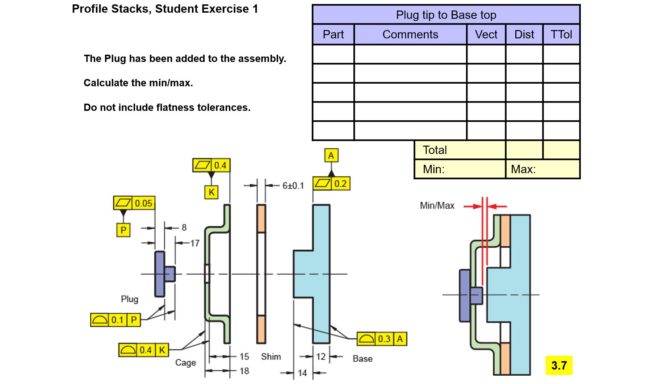
Course Materials
Course Objectives
Students learn to apply geometric tolerancing on parts and assemblies in this advanced GD&T training. They will also learn to perform linear, axial, orientation tolerance stacks, and GD&T tolerance analysis to ensure functional requirements are met. After the stacks, reallocation of tolerances may be needed to meet manufacturing capabilities using worst case and RSS statistical methods.
Prerequisite: GeoTol Pro GD&T Fundamentals Course
Targeted Audience:Design engineers, drafters, manufacturing engineers, quality engineers and others involved with the creation of drawings, tolerance analysis, or design review.
Course Highlights
- Course Developed and Refined for Over 25 Years
- High-Level Design Course Using Case-Study Examples
- Learn Tolerance Stacks and GD&T Application in the Same Course
- Customizable Content for Focused Training
- Beyond the Theory with Relatable Examples and Practical Student Exercises
- Wood and Plastic Models Used for Demonstration
- Follows Along with GeoTol Applications and Tolerance Stacks Workbook
